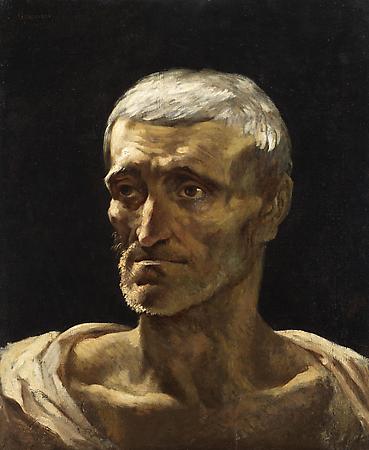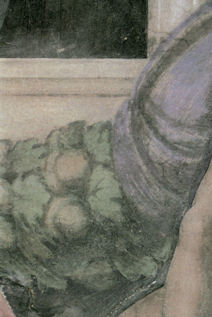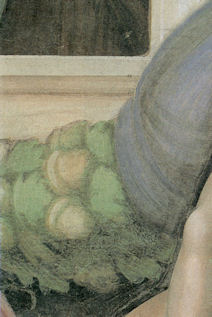 |
| Picture: Dickinson |
Masterpiece is London's major art and antiques fair and I saw some wonderful things at yesterday's preview day. Its focus is more on antiques and decorative arts, but there are some good pictures too. The powerful Gericault above attracted me. I thought I'd seen it before, but when I looked it up I think I'd confused it with a version in Besancon. It's with Dickinson at £1.3m. Gericault attribution is rather fraught - the quality of autograph works varies and there have been many imitators. I'm certainly no expert, but this one looked right to me. It's such a great illustration of that period of Romantic art - a portrait study of a rude mechanical conceived in the heroic Roman idiom.

As with collectors, the best dealers reveal consistent but not homogeneous taste. At this grand fair it's nice to get a chance to see well-curated displays of things that don't altogether appeal to me, and which I might not otherwise see. It feels a bit incestuous to praise Philip Mould's display, given my fondness for Bendor Grosvenor's blog. But their stand had a great range from major works by famous artists to more unusual, but also very fine pictures by less familiar artists. There's a new Van Dyck (as we've come to expect - starting to get blase about seeing new Van Dycks with Philip Mould) and some excellent miniatures. Bendor pointed out this striking self-portrait by Henry Wyatt, a student of Lawrence's. This impressive picture is priced at £28,000, which seems terrific value to me. Obviously you're paying a big mark-up when you buy from a dealer, and the overheads at these fairs are huge. But less fashionable pictures like this still seem very reasonable by most yardsticks.
Decorative art is the main focus of the fair, and I particularly liked a lot of the English furniture on display. This rare early desk at Mallett was one that I wanted to take home. But the real surprise for me was the quality of ancient art at the fair. I'm more of a tourist in antiquity, but a number of things just leaped out at me. My single favourite object in the whole fair was a Greek vase - a kylix by the Oedipus Painter with Charles Ede. Even if you know nothing about ancient art, its quality is really striking. The dealer didn't want me to put a picture online, so hurry along to the fair to see it!


![[selflacecollarss.jpg]](http://2.bp.blogspot.com/-xlQjYLmCtH0/Uakec-vfOVI/AAAAAAAAGjI/zpF4KWBTyDc/s220/selflacecollarss.jpg)





